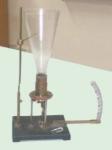- Dynamometer
- Analitycal balance
- Air level
- Wooden model of winch
-
Wooden model of vertical windlass

- Wooden model of screw and nut
- Wedge
- Frick apparatus for explaining the stable equilibrium
- Cone
- Articulated parallelepiped
- Cylinder moving uphill
- Rotary apparatus and elastic rings
- Bodies inertia
- Model of Foucault’s pendulum
- Inclined tubes for water and mercury
- Centrifuge
- Apparatus for collisions
- Rupert's drops
- Pellat's apparatus
- Apparatus illustrating the properties of capillary tubes
- Pneumatic pump
- Summary

 Menu
Menu




















